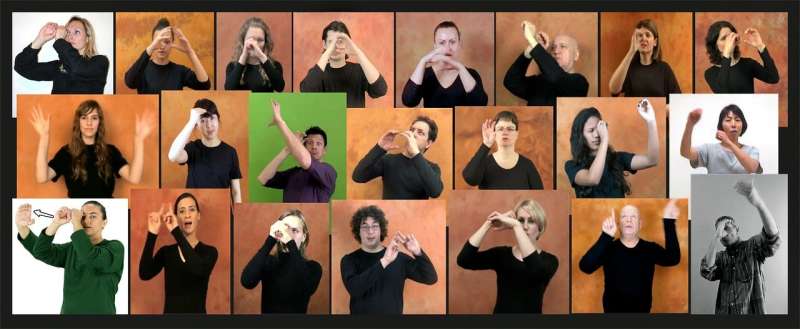Hands in the stars: The first international comparative list of astronomical words in sign languages

During the International Year of Astronomy in 2009, an encyclopedic dictionary of astronomy for French Sign Language, entitled Hands in the Stars, was under the direction of Dominique Proust. This dictionary contains approximately 300 signs describing several classical celestial bodies such as planets, asteroids, galaxies and quasars, as well as technical terms such as telescope, spectrograph and photometry.
In 2016-2017, a large project led by the IAU Commission for Astronomy, Equity and Inclusion ( ) , with funding from the IAU Office of Astronomy for Development, translated Proust's dictionary into English (by Lawrence Augustin Orchard) and Spanish (by Maria Roser GarcÃa and Amelia Ortiz-Gil). The dictionary can be accessed from the website of the Commission through these links: , and .
Based on this previous experience, the Commission recently embarked on a long-term project to collect the different signs in several languages, starting with a selection of 47 words that the experts of the Commission agree are amongst the most commonly used in astronomy education and outreach. The languages involved include German, Italian, Portuguese, Japanese and Polish, among others.
Sign language is now officially practised in almost every country, but diverse heritages and different cultures independently developed specific signs to designate common objects or identical situations. "A Universal Sign Language is gradually being developed, mainly to designate objects and situations related to contemporary technology or events. Nevertheless, there will always be differences between signs in each country that need to be noted, as countries have developed its own signs through time", says Dominique Proust.
Many astronomical words have no equivalent hand sign in any sign language. The signs presented in this list represent a collaboration between deaf communities, educators, and astronomers all over the world. The suggested signs are meant to engage the deaf community in scientific discussion.
The compilation of 47 terms is also available online . Its main goal is to help to reflect on the differences between the various languages, perhaps even helping communities to develop their own sign if they did not yet have one for a particular term. The work is a joint ongoing effort between many individuals and organisations. Signs in some of the languages have been retrieved from the project.
The group working on this task is also analysing the case of words without a sign in some countries. One alternative could be to suggest the use of the sign of a closely related language, for example, Spanish for the Italian community.
The Commission is also considering the possibility of studying each sign in order to determine the similarities and differences between different languages and suggest, if possible, a common and unique sign for each word for every country. This may be an impossible task, but it is one worth exploring.
Provided by International Astronomical Union
















